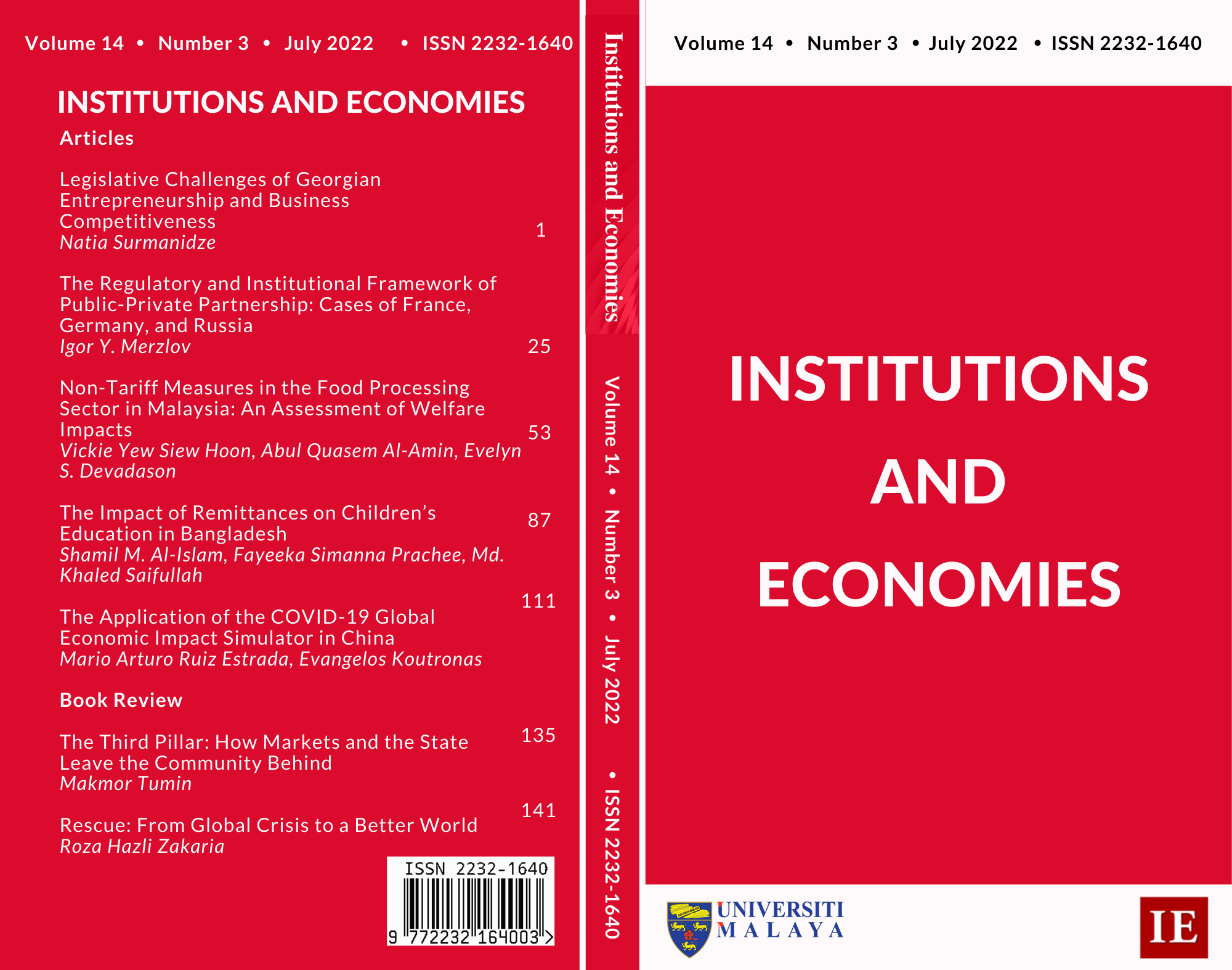The Application of the COVID-19 Global Economic Impact Simulator in China
Main Article Content
Abstract
This paper establishes conceptual foundations for analyzing the economic dimensions of regional or global emerging and endemic infectious disease events, such as the case of Covid-19. The Covid-19 Global Economic Impact Simulator attempts to identify the Covid-19 transmission parameters and forecast its trajectories. The model introduces seven basic indicators - (i) the Covid-19 contagious spread intensity rate (S.I.), (ii) the treatment level for Covid-19 infected cases rate (T); (iii) the number of Covid-19 causalities rate (-C); (iv) the economic wear from the Covid-19 epidemic rate (-Π); (v) the Covid-19 contagious cases multiplier rate (M); (vi) the total economic leaking from
the Covid-19 epidemic rate (-Ltotal); and (vii) the economic desgrowth from the Covid-19 epidemic rate (-δ2019-nCoV). Findings show that Covid-19 exhibits parallel spatial and temporal conditions with the related R.N.A. virus family but carries distinct infection signatures and magnitude of virus replication. Covid-19 ferocity can trigger a severe public health emergency in China with significant impacts on the domestic and world economies.
Downloads
Article Details
Submission of a manuscript implies: that the work described is original, has not been published before (except in the form of an abstract or as part of a published lecture, review, or thesis); that is not under consideration for publication elsewhere; that its publication has been approved by all co-authors, if any, as well as tacitly or explicitly by the responsible authorities at the institution where the work was carried out. Transfer of copyright to the University of Malaya becomes effective if and when the article is accepted for publication. The copyright covers the exclusive right to reproduce and distribute the article, including reprints, translations, photographic reproductions, microform, electronic form (offline and online) or other reproductions of similar nature.
An author may self-archive the English language version of his/her article on his/her own website and his/her institutions repository; however he/she may not use the publishers PDF version which is posted on www.ijie.um.edu.my. Furthermore, the author may only post his/her version, provided acknowledgement is given to the original source of publication and a link must be accompanied by the following text: The original publication is available at www.ijie.um.edu.my.
All articles published in this journal are protected by copyright, which covers the exclusive rights to reproduce and redistribute the article (e.g. as offprint), as well as all translation rights. No material published in this journal may be reproduced photographically or stored on microfilm, in electronic database, video disks, etc., without first obtaining written permission from the publishers. The use of general descriptive names, trade names, trademarks, etc., in this publication, even if not specifically identified, does not imply that these names are not protected by the relevant laws and regulations.
The copyright owners consent does not include copying for general distribution, promotion, new works, or resale. In these cases, specific written permission must first be obtained from the publishers.
